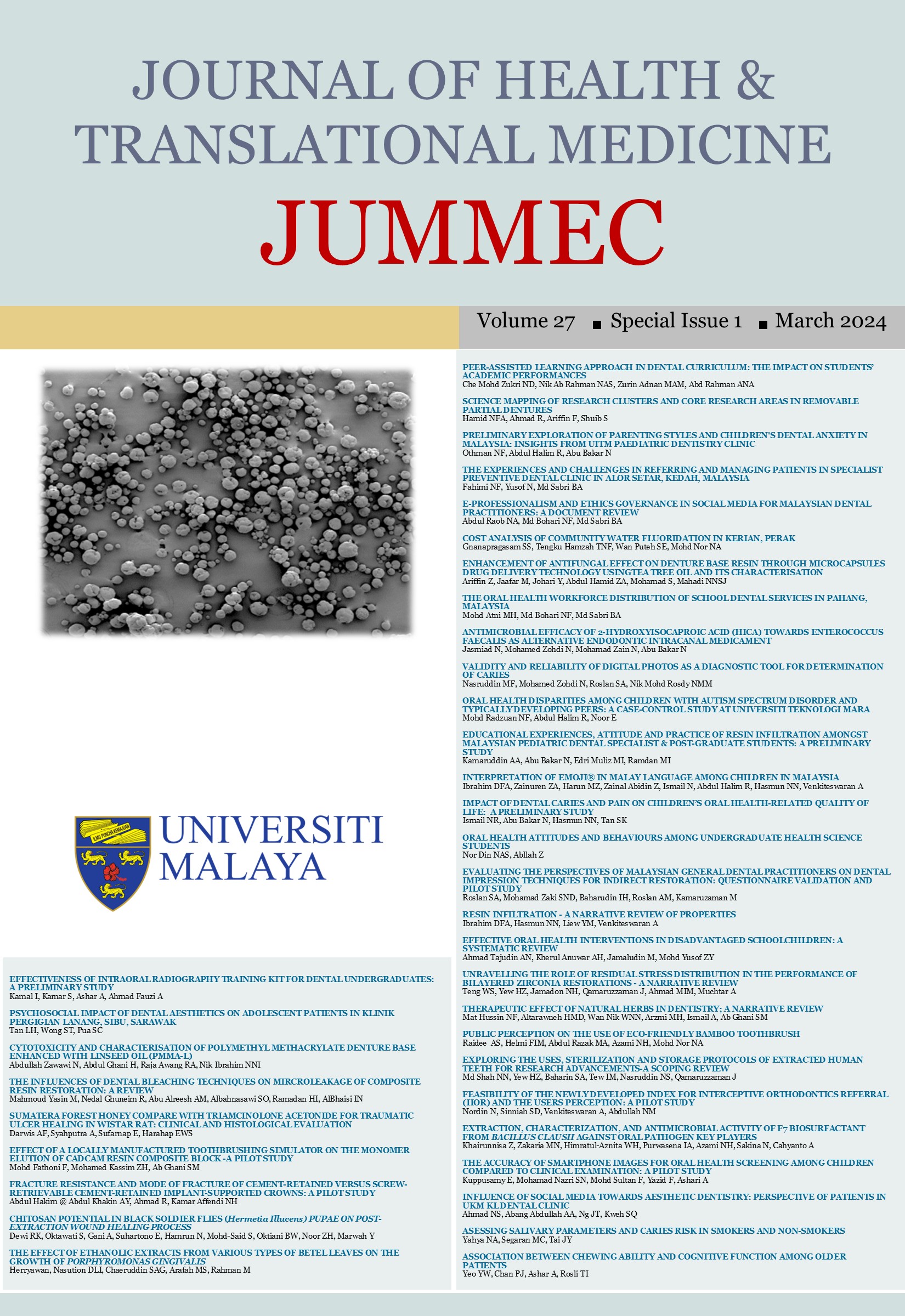RESIN INFILTRATION – A NARRATIVE REVIEW OF PROPERTIES
Received 2024-02-21; Accepted 2024-03-05; Published 2024-03-18
DOI:
https://doi.org/10.22452/jummec.sp2024no1.17Abstract
Resin infiltration ICON® has made it possible to treat initial caries lesions in a novel manner that is consistent with the concept of minimal intervention dentistry. Infiltration of caries lesions is a novel technique for treating non-cavitated lesions on the proximal and smooth surfaces of primary and permanent teeth. The greatest benefit of this method is that it is non-invasive, preserves tooth structure and can be completed in a single visit. This narrative review intends to discuss the properties of the material, its clinical applications and its effectiveness in terms of caries inhibition and esthetics effect, surface roughness, microhardness and penetration ability. There are a number of high-quality studies that support the use of ICON® in arresting non-cavitated proximal caries lesions in primary and permanent teeth. However, the masking ability in managing anterior white spot lesions and fluorosis is still doubtful. Among the material limitations were its questionable long-term color and material stability.
Downloads
Downloads
Published
Issue
Section
License
All authors agree that the article, if editorially accepted for publication, shall be licensed under the Creative Commons Attribution License 4.0 to allow others to freely access, copy and use research provided the author is correctly attributed, unless otherwise stated. All articles are available online without charge or other barriers to access. However, anyone wishing to reproduce large quantities of an article (250+) should inform the publisher. Any opinion expressed in the articles are those of the authors and do not reflect that of the University of Malaya, 50603 Kuala Lumpur, Malaysia.


